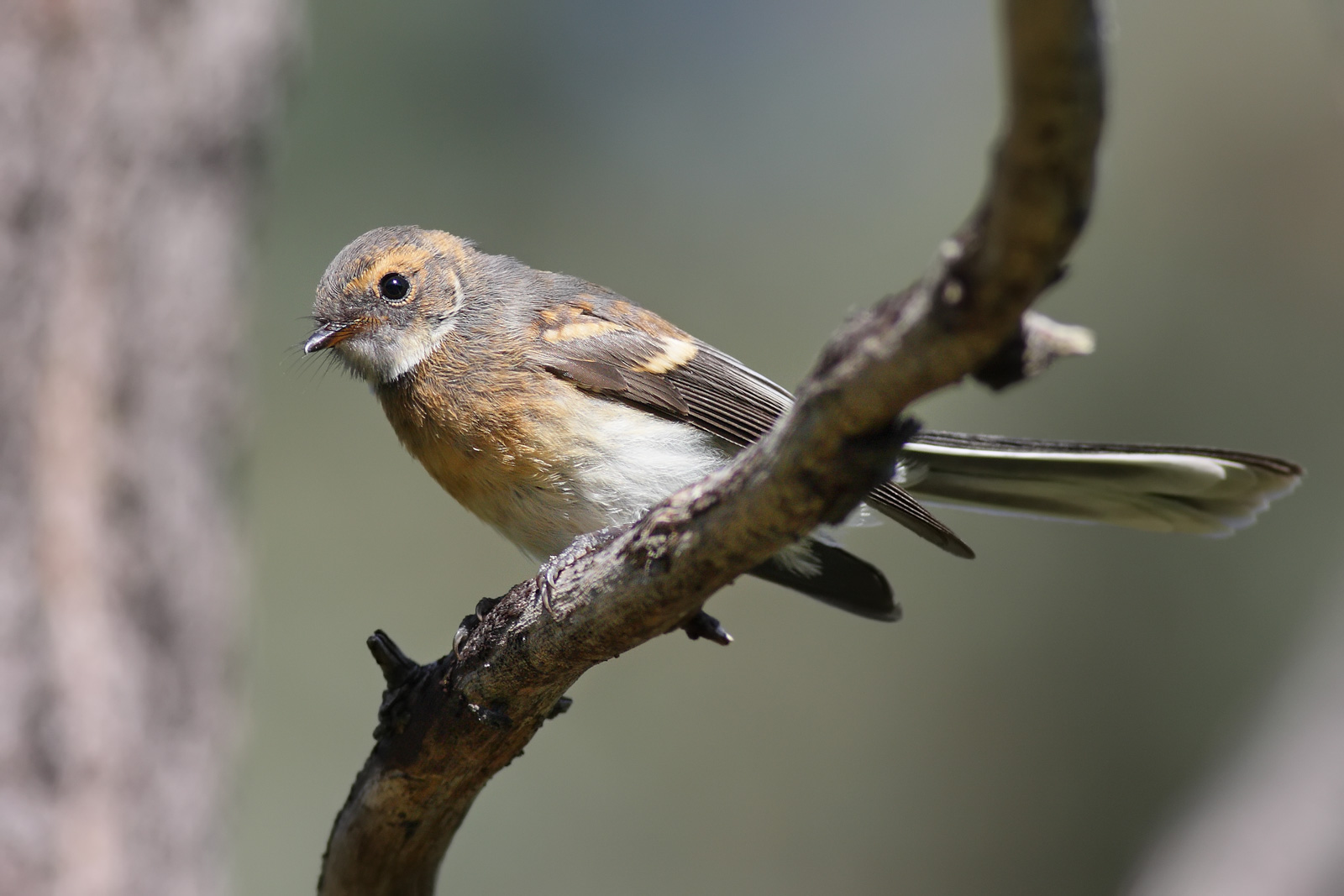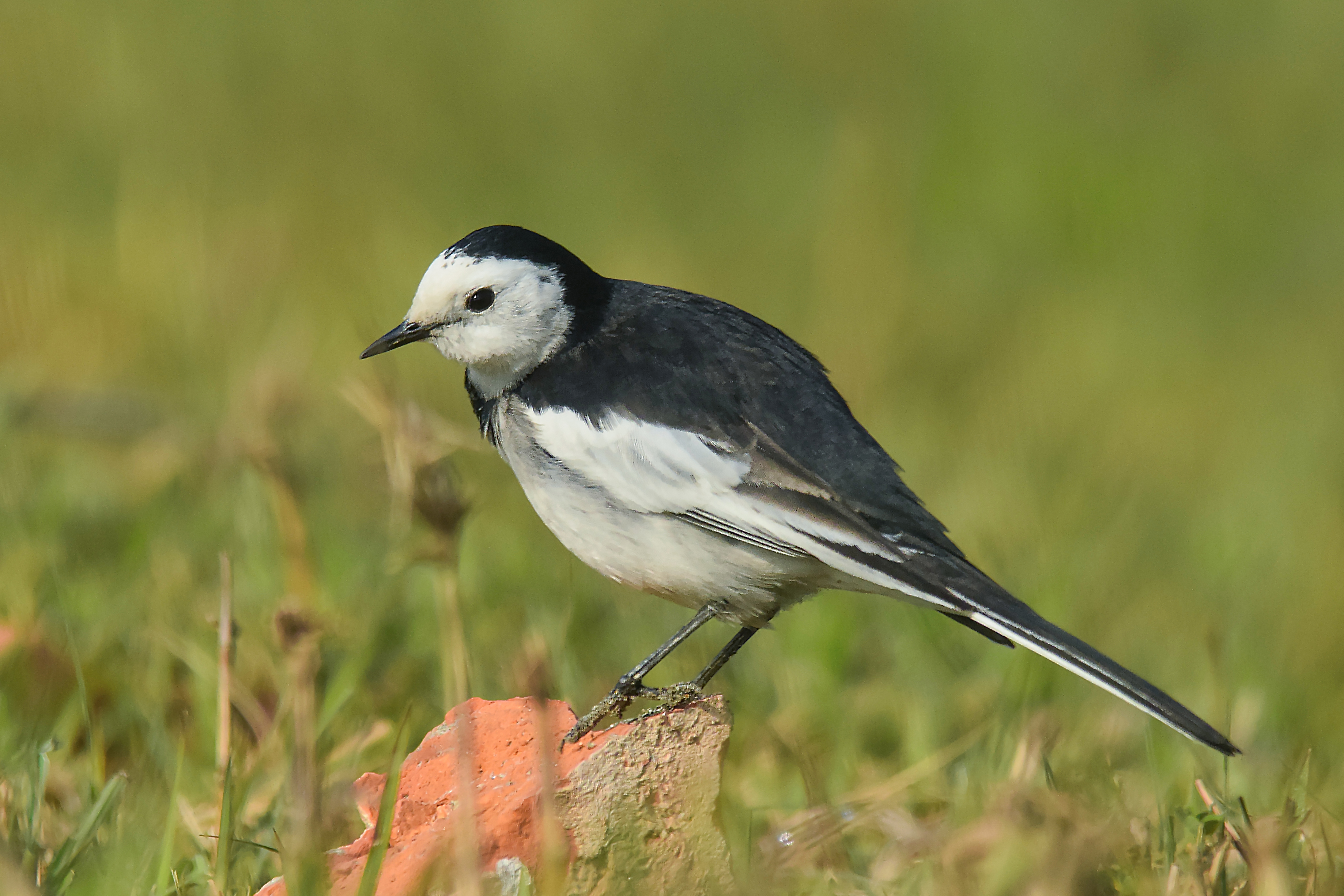|
Rhipidura
Fantails are small insectivorous songbirds of the genus ''Rhipidura'' in the family (biology), family Rhipiduridae, native to Australasia, Southeast Asia and the Indian subcontinent. Most of the species are about long, specialist aerial feeders, and named as "fantails", but the Australian willie wagtail is a little larger, and, though still an expert hunter of insects on the wing, concentrates equally on terrestrial prey. The true wagtails are part of the genus ''Motacilla'' in the family Motacillidae and are not close relatives of the fantails. Taxonomy The genus '' Rhipidura '' was introduced in 1827 by the naturalists Nicholas Aylward Vigors, Nicholas Vigors and Thomas Horsfield. The type species was subsequently designated as ''Muscicapa flabellifera'' Johann Friedrich Gmelin, Gmelin, JF, 1788 by the English zoologist George Robert Gray, George Gray in 1840. This is a junior synonym of ''Muscicapa fuliginosa'' Anders Erikson Sparrman , Sparrman, 1787, the New Zealand fanta ... [...More Info...] [...Related Items...] OR: [Wikipedia] [Google] [Baidu] |
Willie Wagtail
The willie wagtail (also spelt willy wagtail), scientific name ''Rhipidura leucophrys'', is a passerine bird native to Australia, New Guinea, the Solomon Islands, the Bismarck Archipelago, and Eastern Indonesia. It is a common and familiar bird throughout much of its range, living in most habitats apart from thick forest. Measuring in length, the willie wagtail is contrastingly coloured with almost entirely black upperparts and white underparts; the male and female have similar plumage. Three subspecies are recognised; ''Rhipidura leucophrys leucophrys'' from central and southern Australia, the smaller ''R. l. picata'' from northern Australia, and the larger ''R. l. melaleuca'' from New Guinea and islands in its vicinity. It is unrelated to the true wagtails of the genus ''Motacilla''; it is a member of the fantail genus ''Rhipidura'' and is a part of a "core corvine" group that includes true Corvidae, crows and ravens, drongos and Bird-of-paradise, birds of paradise. Within ... [...More Info...] [...Related Items...] OR: [Wikipedia] [Google] [Baidu] |
Grey Fantail
The grey fantail (''Rhipidura albiscapa'') is a small insectivorous bird. There is no sexual dimorphism. It is a common fantail found in Australia, the Solomon Islands, Vanuatu and New Caledonia. The species is considered by many to be conspecific with the New Zealand fantail (''Rhipidura fuliginosa'');Bird Life International, Grey Fantail grey fantail entry on the Birdlife International Database including explanation as to why grey and New Zealand fantails are not considered to be separate species. however, differences in its calls lead some authorities to treat it as a separate species. The studies of grey fantail in 1999 by Richard Schodde and Ian Mason recommen ... [...More Info...] [...Related Items...] OR: [Wikipedia] [Google] [Baidu] |
New Zealand Fantail
The New Zealand fantail (''Rhipidura fuliginosa'') is a small insectivorous bird, the only species of fantail in New Zealand. It has four subspecies: ''R. f. fuliginosa'' in the South Island, ''R. f. placabilis'' in the North Island, ''R. f. penita'' in the Chatham Islands, and the now-extinct ''R. f. cervina'' formerly on Lord Howe Island. It is also known by its Māori names, , or , and the Chatham Island subspecies by the Moriori name ; THE MORIORI PEOPLE OF THE CHATHAM ISLANDS: THEIR TRADITIONS AND HISTORY by Alexander Shand. the common pied morph is also known as pied fantail (not to be confused with the [...More Info...] [...Related Items...] OR: [Wikipedia] [Google] [Baidu] |
Black Thicket Fantail
The black thicket fantail (''Rhipidura maculipectus'') is a species of bird in the family Rhipiduridae. It is found in the Aru Islands and New Guinea. This species is one of 47 in the genus ''Rhipidura''. Description This is a medium-sized, long-tailed bird measuring 18-19 cm and weighing 18-19 g. The plumage is blackish with white spots on the chest and wings and a white tip to the tail. There is besides a short white stripe above the eye and white spot on the side of the neck. The tail is often lifted and fanned out. The iris is dark brown, the beak is black with pinkish underside. Males and females are similar but females have fewer spots and are paler on the abdomen. Juveniles are sooty black all over except for an indistinct white supraorbital spot and white tips on the tail feathers. The black thicket fantail is similar to the White-bellied thicket fantail (''R. leucothorax''), but the latter differs in its white belly (as reflected by its name). This species ... [...More Info...] [...Related Items...] OR: [Wikipedia] [Google] [Baidu] |
White-bellied Thicket Fantail
The white-bellied thicket fantail (''Rhipidura leucothorax'') is a species of bird in the family Rhipiduridae. This species is one of 47 in the genus ''Rhipidura''. It is found in New Guinea. Its natural habitats are subtropical or tropical moist lowland forests and subtropical or tropical mangrove forests. Description Medium-sized long-tailed bird (18cm, 19-19.7g). The plumage is blackish with a white belly, white spots on the chest, wings, side of the neck and a white tip of the tail. There is as well a short white stripe above the eye. The legs are dark - from dark gray to black. The tail is often upturned and fanned out. Males and females are similar. Juveniles are similar to adults, but browner in color, with spots on the breast and totally black bill. White-bellied thicket fantail is similar to Black thicket fantail (''R. maculipectus''), but is differed by its white breast (which is reflected in its name). This species is also similar to Sooty thicket fantail (''R. th ... [...More Info...] [...Related Items...] OR: [Wikipedia] [Google] [Baidu] |
Northern Fantail
The northern fantail (''Rhipidura rufiventris'') is a species of bird in the family Rhipiduridae. It is found in New Guinea and northern Australia (from Broome, Western Australia, Broome in Western Australia to the Shire of Burdekin in Queensland). Its natural habitats are subtropical or tropical moist lowland forests and subtropical or tropical mangrove forests. The Biak fantail (''R. kordensis'') was formerly considered a subspecies. References  Rhipidura, northern fantail
Birds of Timor
Birds of the Maluku Islands
Birds of New Guinea
Birds of the Northern Territory
Birds of Cape York Peninsula
Birds described in 1818, northern fantail
Taxa named by Louis Pierre Vieillot
Taxonomy articles created by Polbot
{{Rhipiduridae-stub ...
Rhipidura, northern fantail
Birds of Timor
Birds of the Maluku Islands
Birds of New Guinea
Birds of the Northern Territory
Birds of Cape York Peninsula
Birds described in 1818, northern fantail
Taxa named by Louis Pierre Vieillot
Taxonomy articles created by Polbot
{{Rhipiduridae-stub ...
[...More Info...] [...Related Items...] OR: [Wikipedia] [Google] [Baidu] |
Sooty Thicket Fantail
The sooty thicket fantail (''Rhipidura threnothorax'') is a species of bird in the family Rhipiduridae. It is found in New Guinea. Habitats and behavior The majority of fantails are strong fliers, and some species can undertake long migrations, but sooty thicket fantail as well as the other thicket fantails (white-bellied thicket fantail and black thicket fantail) are very weak fliers, and need to alight regularly. Its natural habitat is subtropical or tropical moist lowland forests. Taxonomy According to IOC there are 2 recognised subspecies.Gill F., Donsker D. & Rasmussen P. (Eds.)Orioles, drongos, fantails ''IOC World Bird List (v11.2)''. doi:10.14344/IOC.ML.11.2 In alphabetical order, these are: * R. t. fumosa Schlegel, 1871 — Yapen ( Geelvink Bay, NW of New Guinea) * ''R. t. threnothorax'' Müller, S, 1843 — Raja Ampat Islands (NW of New Guinea), Aru Islands (SW of New Guinea) and New Guinea New Guinea (; Hiri Motu: ''Niu Gini''; , fossilized , also known ... [...More Info...] [...Related Items...] OR: [Wikipedia] [Google] [Baidu] |
Cockerell's Fantail
The white-winged fantail (''Rhipidura cockerelli'') or Cockerell's fantail, is a species of bird in the family Rhipiduridae. It is found in the Solomon Islands apart from the island of Malaita in the southeast of the archipelago. The white-gorgeted fantail (''Rhipidura coultasi'') was formerly considered as a subspecies. Its natural habitat is subtropical or tropical moist lowland forests. It is threatened by habitat loss. Taxonomy The white-winged fantail was formally described in 1879 by the Australian ornithologist Edward Pierson Ramsay based on a specimen that had been collected by James F. Cockerell on Guadalcanal in the Solomon Islands. Ramsay coined the binomial name ''Sauloprocta cockerelli''. The specific epithet was chosen to honour the collector. This species is now placed with the other fantails in the genus ''Rhipidura'' that was introduced in 1827 by the naturalists Nicholas Vigors and Thomas Horsfield. Six subspecies are recognised: * ''R. c. septentrionalis ... [...More Info...] [...Related Items...] OR: [Wikipedia] [Google] [Baidu] |
Rhipiduridae
The family Rhipiduridae are small insectivorous birds of Australasia, Southeast Asia and the Indian subcontinent that includes the fantails and silktails. Taxonomy and systematics The family contains 55 species which are divided into four genera: * Subfamily Rhipidurinae: **''Rhipidura'' – typical fantails (51 species) *Subfamily Lamproliinae: **'' Chaetorhynchus'' – drongo fantail **'' Eutrichomyias'' – cerulean flycatcher **''Lamprolia The silktails are a group of birds endemic to Fiji. The two species ( Taveuni silktail and Natewa silktail) are placed in the genus ''Lamprolia''. They look superficially like a diminutive bird-of-paradise but are actually closely related to the ...'' – silktails (2 species) References {{Taxonbar, from=Q847173 Bird families Birds of Oceania ... [...More Info...] [...Related Items...] OR: [Wikipedia] [Google] [Baidu] |
Wagtail
Wagtails are a group of passerine birds that form the genus ''Motacilla'' in the family Motacillidae. The common name and genus name are derived from their characteristic tail pumping behaviour. Together with the pipits and longclaws they form the family Motacillidae. The forest wagtail belongs to the monotypic genus ''Dendronanthus'' which is closely related to ''Motacilla'' and sometimes included therein. The willie wagtail (''Rhipidura leucophrys'') of Australia is not a true wagtail; it was named as such by early settlers from England from its superficial similarity in colour and behaviour to the pied wagtail, but belongs to an unrelated genus of birds known as fantails. Taxonomy The genus ''Motacilla'' was described by the Swedish naturalist Carl Linnaeus in 1758 in the 10th edition of Systema Naturae, tenth edition of his ''Systema Naturae''. The type species is the white wagtail. ''Motacilla'' is the Latin name for the pied wagtail; although actually a diminutive of ... [...More Info...] [...Related Items...] OR: [Wikipedia] [Google] [Baidu] |
Junior Synonym
In taxonomy, the scientific classification of living organisms, a synonym is an alternative scientific name for the accepted scientific name of a taxon. The botanical and zoological codes of nomenclature treat the concept of synonymy differently. * In botanical nomenclature, a synonym is a scientific name that applies to a taxon that now goes by a different scientific name. For example, Linnaeus was the first to give a scientific name (under the currently used system of scientific nomenclature) to the Norway spruce, which he called '' Pinus abies''. This name is no longer in use, so it is now a synonym of the current scientific name, '' Picea abies''. * In zoology, moving a species from one genus to another results in a different binomen, but the name is considered an alternative combination rather than a synonym. The concept of synonymy in zoology is reserved for two names at the same rank that refers to a taxon at that rank – for example, the name ''Papilio prorsa'' Linnaeus, ... [...More Info...] [...Related Items...] OR: [Wikipedia] [Google] [Baidu] |




